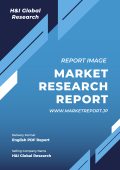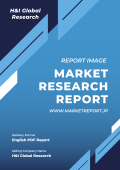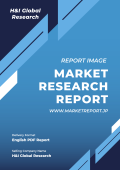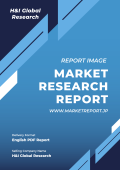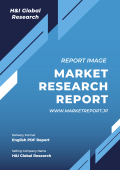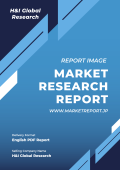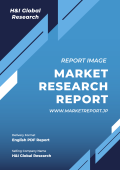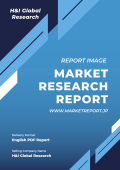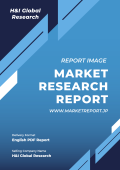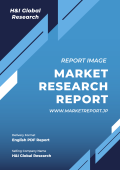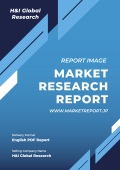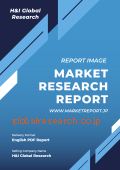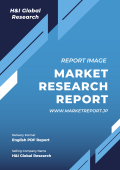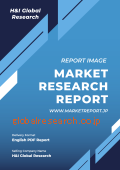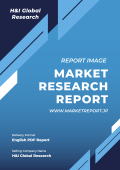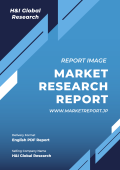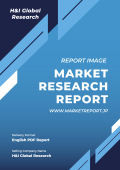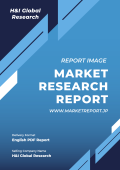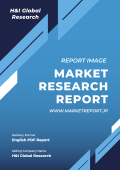| ■ 英語タイトル:Orthopedic Braces and Supports Market Report by Product (Lower Extremity Braces and Supports, Spinal Braces and Supports, Upper Extremity Braces and Supports), Type (Soft and Elastic Braces and Supports, Hinged Braces and Supports, Hard and Rigid Braces and Supports), Application (Ligament Injury, Preventive Care, Post-Operative Rehabilitation, Osteoarthritis, and Others), End User (Orthopedic Clinics, Hospitals and Surgical Centers, Over-the-Counter (OTC) Platforms, and Others), and Region 2025-2033
|
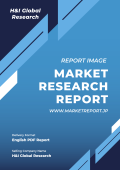 | ■ 発行会社/調査会社:IMARC
■ 商品コード:IMA25FR0181
■ 発行日:2025年1月
■ 調査対象地域:グローバル
■ 産業分野:医療
■ ページ数:129
■ レポート言語:英語
■ レポート形式:PDF
■ 納品方式:Eメール
|
■ 販売価格オプション
(消費税別)
※販売価格オプションの説明はこちらで、ご購入に関する詳細案内はご利用ガイドでご確認いただけます。
※お支払金額は「換算金額(日本円)+消費税+配送料(Eメール納品は無料)」です。
※Eメールによる納品の場合、通常ご注文当日~2日以内に納品致します。
※レポート納品後、納品日+5日以内に請求書を発行・送付致します。(請求書発行日より2ヶ月以内の銀行振込条件、カード払いも可能)
※IMARC社の概要及び新刊レポートはこちらでご確認いただけます。
| ★グローバルリサーチ資料[整形外科用装具&支持具の世界市場(2025-2033):下肢装具&支持具、脊椎装具&支持具、上肢装具&支持具]についてメールでお問い合わせはこちら
|
*** レポート概要(サマリー)***
世界の整形外科用装具&支持具市場の規模は、2024年に44億米ドルに達しました。今後、IMARC Groupは、2033年までに市場規模が60億米ドルに達し、2025年から2033年の年間平均成長率(CAGR)は3.47%になると予測しています。素材やデザインにおける新たな技術革新、筋骨格系障害の発生率の増加、そして矯正装具や疼痛管理サポートの利点に対する認識の高まりは、市場を牽引する主な要因のいくつかです。
矯正装具やサポートは、さまざまな筋骨格系の疾患や怪我に苦しむ人々に安定性、サポート、そして緩和をもたらすように設計された医療機器です。これらの器具は、痛みの緩和、可動性の向上、治癒プロセスの促進を目的として、整形外科医から推奨されることがよくあります。 膝装具、足首サポーター、手首スプリント、腰装具など、さまざまな形状があります。 通常、ネオプレン、金属、伸縮性のある生地などの素材で製造され、患部に必要な圧迫と補強を提供します。 さらに、損傷した関節の固定、アライメントの問題の修正、酷使された筋肉の負担の軽減にも役立ちます。
市場は主にスポーツによる負傷の増加によって牽引されています。さらに、スポーツや運動への参加率の増加により、スポーツ関連の負傷率も増加しています。アスリートや活動的な人々は、負傷を予防し、治癒プロセスをサポートするために、整形外科用装具を頻繁に使用しています。さらに、整形外科用装具の技術の継続的な進歩により、快適で効果的な製品が開発され、ユーザーエクスペリエンスが向上したことも、成長を促すもう一つの大きな要因となっています。さらに、患者の間で外科手術よりも非侵襲的な治療法を選択する傾向が高まっているため、製品に対する需要が増加し、多くの筋骨格系の症状を管理するための非外科的ソリューションが提供されています。これに伴い、医療従事者や患者の間で装具の利点に対する認識が高まっていることも、使用の増加につながり、市場の成長を促進しています。
装具および支持具市場のトレンド/推進要因:
素材とデザインにおける新たな技術的進歩
市場は、素材とデザインにおける新技術の進歩によって牽引されています。さらに、素材におけるいくつかの技術的進歩により、整形外科用装具およびサポーター用の軽量で耐久性があり、低刺激性の素材が開発され、市場の成長を促進しています。また、先進複合材料、メモリーフォーム、通気性素材などの素材が従来の素材に取って代わり、患者の快適性と適合性を向上させ、市場の成長に影響を与えています。さらに、デザインやカスタマイズのオプションの進歩は、3D(三次元)印刷技術によって促進され、患者一人一人の独特な構造に合わせた正確なフィットが可能になり、患者の快適性を向上させ、治療効果を最適化し、回復時間を短縮し、合併症のリスクを最小限に抑えることで、これもまた成長を促す大きな要因となっています。これに加えて、患者は優れた快適性、可動性、審美性を備えた製品を求める傾向にあり、製品の普及率を加速させています。
筋骨格系障害の増加
市場は、筋骨格系障害の増加による深刻な影響を目の当たりにしています。筋骨格系障害には、筋肉、骨、腱、靭帯、関節に影響を及ぼす多数の症状が含まれます。さらに、痛みの緩和、サポートの提供、治癒プロセスの促進を目的とした効果的な非手術的ソリューションを求める人々が増えていることも、市場の成長に貢献しています。さらに、早期介入と傷害予防の重要性に対する認識の高まりにより、負傷のリスクを軽減し、パフォーマンスを向上させるための整形外科用装具やサポートを求める人が増えており、これも市場成長の大きな要因となっています。 また、これらの問題に対処するための非侵襲的かつ費用対効果の高いアプローチを提供していることも、患者や医療従事者にとって魅力的な選択肢となっており、市場成長を後押ししています。さらに、高齢者人口の増加は、変形性関節症、骨折、捻挫など、多くの障害を引き起こしやすく、これも市場の見通しを明るくしています。
整形外科用装具やサポートの利点に対する認識の高まり
また、疼痛管理や筋骨格系の健康増進に役立つこれらの器具の利点に対する認識の高まりも、市場を牽引しています。さらに、筋骨格系の疾患やスポーツ関連の負傷の増加も市場の成長を加速させています。また、日常生活において不快感や痛み、負傷を経験する人も多く、製品の普及率を加速させています。これらの器具は痛みの緩和や関節の安定化、治癒プロセスの促進に役立ちます。さらに、医療従事者、オンラインリソース、患者の体験談など、さまざまなメディアチャンネルを通じて情報を公開することは、整形外科的サポートの利点について一般の人々を教育する上で不可欠であり、もう一つの大きな成長要因となっています。さらに、患者や消費者は、特定の整形外科的状態や傷害の種類に合わせてカスタマイズされた、利用可能なさまざまな種類の製品について知らされており、これにより市場の見通しは明るくなっています。
整形外科用装具&支持具業界のセグメント化:
IMARCグループは、世界の整形外科用装具および支持具市場レポートの各セグメントにおける主要なトレンドの分析を提供しており、2025年から2033年までの世界および地域レベルでの予測も行っています。当社のレポートでは、製品、タイプ、用途、エンドユーザーに基づいて市場を分類しています。
製品別内訳:
下肢装具および支持具
脊椎装具および支持具
上肢装具および支持具
下肢装具およびサポーターが最大の市場シェアを占めています。
本レポートでは、製品別の市場の詳細な内訳と分析を提供しています。これには、下肢装具およびサポーター、脊椎装具およびサポーター、上肢装具およびサポーターが含まれます。本レポートによると、下肢装具およびサポーターが最大の市場シェアを占めています。
下肢装具およびサポーターには、膝、足首、足など下肢をサポートし安定させるように設計された数多くの整形外科製品が含まれます。 変形性関節症、靭帯損傷、術後のリハビリテーションなど、さまざまな整形外科的疾患の治療に役立つことから、下肢装具およびサポーターは高い需要があります。 下肢に問題を抱える人々にとって、可動性を維持し痛みを軽減する上で不可欠な補助具となります。
さらに、脊椎装具およびサポートには、脊椎を支え、矯正するよう調整された器具も含まれます。これらは脊椎の変形、損傷、または手術後の回復期にある人々にとって不可欠です。また、脊柱側湾症、椎間板ヘルニア、脊柱管狭窄症などの症状の増加に伴い、脊椎装具およびサポートの需要も高まっており、市場の成長を後押ししています。これらの器具は姿勢の改善、痛みの軽減、治癒過程の促進に役立ちます。
上肢装具および支持具には、腕、肘、手首、手用の整形外科製品が含まれます。これらは、手根管症候群、テニス肘、骨折などの症状の管理に不可欠です。安定性を提供し、リハビリを支援することで、個人が上肢の機能を回復することを可能にします。
タイプ別内訳:
ソフトおよび弾性装具および支持具
ヒンジ付き装具および支持具
硬質および硬性装具および支持具
現在、ソフトおよび弾性装具および支持具が最大の市場シェアを占めています。
種類別の市場の詳細な内訳と分析も報告書に記載されています。 これには、ソフトおよび弾性装具および支持具、蝶番付き装具および支持具、硬性および剛性装具および支持具が含まれます。 報告書によると、ソフトおよび弾性装具および支持具が最大の市場シェアを占めています。
ソフトで弾力性のある装具やサポーターの需要が増加しているのは、その効果、快適性、汎用性によるもので、これが市場の成長に影響を与えています。さらに、ソフトで弾力性のある装具やサポーターは、高い快適性を提供し、身体の輪郭にフィットし、ぴったりと快適に装着できます。これは、整形外科的サポートを長期間使用する必要がある患者にとって不可欠であり、不快感を最小限に抑え、処方された治療へのコンプライアンスを促します。
さらに、柔軟性のある素材は動きやすく、リハビリを促進し、回復に不可欠な関節の可動性を維持できるため、軽度の捻挫から重度の怪我まで、さまざまな整形外科的問題に対応できます。
また、ソフトで伸縮性のある装具やサポーターは軽量であることも好まれています。日常生活やスポーツなどの身体活動に支障をきたさないため、パフォーマンスを犠牲にすることなく継続的なサポートを必要とするアスリートやアクティブなライフスタイルを送る人々からの需要が高まっています。
用途別内訳:
靭帯損傷
予防ケア
術後リハビリテーション
変形性関節症
その他
靭帯損傷が市場の最大シェアを占めています
用途に基づく市場の詳細な内訳と分析も報告書に記載されています。これには、靭帯損傷、予防ケア、術後リハビリテーション、変形性関節症、その他が含まれます。報告書によると、靭帯損傷が最大の市場シェアを占めています。
特にスポーツや運動中の靭帯損傷の発生率が増加しているため、製品の需要が高まっています。また、スポーツやフィットネスを日常的に行う人の数が増加しているため、前十字靭帯(ACL)断裂や捻挫などの靭帯損傷のリスクが高まり、市場成長に影響を与えています。
さらに、整形外科技術の進歩により、靭帯損傷に的を絞ったサポートを提供する専門の装具やサポーターの開発が進んでいます。これらの製品は、回復期間に必要な圧迫、保護、安定性を提供するように設計されています。これに伴い、靭帯損傷を起こしやすい高齢者人口の増加が市場成長を後押ししています。
エンドユーザー別内訳:
整形外科クリニック
病院および外科センター
店頭(OTC)プラットフォーム
その他
整形外科クリニックが市場の最大シェアを占めています
エンドユーザー別の市場の詳細な内訳と分析も報告書に記載されています。これには、整形外科クリニック、病院および外科センター、店頭(OTC)プラットフォーム、その他が含まれます。報告書によると、整形外科クリニックが最大の市場シェアを占めています。
整形外科クリニックは、筋骨格系の疾患の診断、治療、リハビリテーションに専念する専門医療施設です。この専門性により、整形外科装具やサポートの選択と適用において他に類を見ない専門知識が提供されます。整形外科医、理学療法士、装具士などの整形外科臨床医は、患者のニーズを深く理解しているため、最も適した整形外科装具を処方することができます。
さらに、整形外科クリニックは高度な診断ツールや機器を備えており、患者の状態を正確に評価できるため、個々のニーズに合わせた整形外科用サポートを正確に処方することができ、患者の治療効果を高めることができます。これにより、市場の成長が促進されます。
これに伴い、整形外科クリニックは患者中心のアプローチを維持し、患者の快適性、機能性、長期的な幸福を優先しています。これは、整形外科用サポートメーカーの目標と一致しており、市場に明るい見通しをもたらしています。
地域別内訳:
北米
アジア太平洋
ヨーロッパ
中東およびアフリカ
中南米
北米が市場で圧倒的な優位性を示しています
市場調査レポートでは、北米、アジア太平洋、ヨーロッパ、中東およびアフリカ、中南米を含むすべての主要地域市場の包括的な分析も提供しています。レポートによると、北米が最大の市場シェアを占めています。
北米地域は、ヘルスケアインフラの成長と整形外科医療に対する意識の高まりによって牽引されています。さらに、高齢者人口の増加と健康管理への積極的な取り組みが相まって、製品の需要が高まり、大きな消費者基盤が形成され、市場の成長に影響を与えています。
さらに、学術界と民間部門の連携による整形外科技術の研究開発(R&D)と最先端のイノベーションへの重点がますます高まっていることも、市場成長を後押ししています。さらに、厳格な品質管理対策の実施と業界標準の順守により、メーカーと消費者双方に信頼感のある環境が生まれており、市場成長を促進しています。
競合状況:
現在、主要企業は業界での地位を強化し、足場を維持するために、さまざまな戦略的イニシアティブを採用しています。こうした行動は、成長を促進し、市場での優位性を維持するために役立っています。各社は、特定の条件に合わせてカスタマイズされた装具やサポートの開発、および消費者の進化するニーズを満たすためのデザインの改善など、革新的で多様な製品ポートフォリオを創出するために、研究開発(R&D)に投資しています。さらに、企業はデジタル技術を取り入れ、遠隔医療ソリューション、オンライン販売プラットフォーム、モバイルアプリに投資することで、消費者と直接関わり、個別化されたソリューションやガイダンスを提供しています。これに伴い、主要企業は、流通ネットワークの拡大に役立ち、市場動向や消費者嗜好に関する貴重な洞察を提供してくれる医療提供者、病院、リハビリテーションセンターと戦略的パートナーシップを結んでいます。
市場調査レポートでは、市場における競争環境の包括的な分析を提供しています。また、すべての主要企業の詳しいプロフィールも提供されています。市場における主要企業の一部は以下の通りです。
3M Company
Bauerfeind AG
Bird & Cronin (Dynatronics Corporation)
Breg Inc.
BSN medical GmbH (Essity AB)
Deroyal Industries Inc.
DJO Finance LLC (Enovis)
Medi GmbH & Co. KG
Össur Hf
Otto Bock
Remington Medical Equipment
Thuasne Group
Trulife
Zimmer Biomet Holdings Inc.
このレポートで回答される主な質問
1. 2025年から2033年の間に、世界の整形外科用装具および支持具市場の成長率はどの程度になると予測されるでしょうか?
2. 世界の整形外科用装具および支持具市場を牽引する主な要因は何でしょうか?
3. 整形外科用装具&支持具の世界市場に与えるCOVID-19の影響はどのようなものですか?
4. 製品別の世界整形外科用装具&支持具市場の内訳はどのようなものですか?
5. 種類別の世界整形外科用装具&支持具市場の内訳はどのようなものですか?
6. 用途別の世界整形外科用装具&支持具市場の内訳はどのようなものですか?
7. 世界の整形外科用装具およびサポーター市場をエンドユーザー別に分類するとどうなりますか?
8. 世界の整形外科用装具およびサポーター市場における主要地域はどこですか?
9. 世界の整形外科用装具およびサポーター市場における主要企業/プレーヤーはどこですか?
世界の整形外科用装具&支持具市場の規模は、2024年に44億米ドルに達しました。今後、IMARC Groupは、2033年までに市場規模が60億米ドルに達し、2025年から2033年の年間平均成長率(CAGR)は3.47%になると予測しています。素材やデザインにおける新たな技術革新、筋骨格系障害の発生率の増加、そして矯正装具や疼痛管理サポートの利点に対する認識の高まりは、市場を牽引する主な要因のいくつかです。
矯正装具やサポートは、さまざまな筋骨格系の疾患や怪我に苦しむ人々に安定性、サポート、そして緩和をもたらすように設計された医療機器です。これらの器具は、痛みの緩和、可動性の向上、治癒プロセスの促進を目的として、整形外科医から推奨されることがよくあります。 膝装具、足首サポーター、手首スプリント、腰装具など、さまざまな形状があります。 通常、ネオプレン、金属、伸縮性のある生地などの素材で製造され、患部に必要な圧迫と補強を提供します。 さらに、損傷した関節の固定、アライメントの問題の修正、酷使された筋肉の負担の軽減にも役立ちます。
市場は主にスポーツによる負傷の増加によって牽引されています。さらに、スポーツや運動への参加率の増加により、スポーツ関連の負傷率も増加しています。アスリートや活動的な人々は、負傷を予防し、治癒プロセスをサポートするために、整形外科用装具を頻繁に使用しています。さらに、整形外科用装具の技術の継続的な進歩により、快適で効果的な製品が開発され、ユーザーエクスペリエンスが向上したことも、成長を促すもう一つの大きな要因となっています。さらに、患者の間で外科手術よりも非侵襲的な治療法を選択する傾向が高まっているため、製品に対する需要が増加し、多くの筋骨格系の症状を管理するための非外科的ソリューションが提供されています。これに伴い、医療従事者や患者の間で装具の利点に対する認識が高まっていることも、使用の増加につながり、市場の成長を促進しています。
装具および支持具市場のトレンド/推進要因:
素材とデザインにおける新たな技術的進歩
市場は、素材とデザインにおける新技術の進歩によって牽引されています。さらに、素材におけるいくつかの技術的進歩により、整形外科用装具およびサポーター用の軽量で耐久性があり、低刺激性の素材が開発され、市場の成長を促進しています。また、先進複合材料、メモリーフォーム、通気性素材などの素材が従来の素材に取って代わり、患者の快適性と適合性を向上させ、市場の成長に影響を与えています。さらに、デザインやカスタマイズのオプションの進歩は、3D(三次元)印刷技術によって促進され、患者一人一人の独特な構造に合わせた正確なフィットが可能になり、患者の快適性を向上させ、治療効果を最適化し、回復時間を短縮し、合併症のリスクを最小限に抑えることで、これもまた成長を促す大きな要因となっています。これに加えて、患者は優れた快適性、可動性、審美性を備えた製品を求める傾向にあり、製品の普及率を加速させています。
筋骨格系障害の増加
市場は、筋骨格系障害の増加による深刻な影響を目の当たりにしています。筋骨格系障害には、筋肉、骨、腱、靭帯、関節に影響を及ぼす多数の症状が含まれます。さらに、痛みの緩和、サポートの提供、治癒プロセスの促進を目的とした効果的な非手術的ソリューションを求める人々が増えていることも、市場の成長に貢献しています。さらに、早期介入と傷害予防の重要性に対する認識の高まりにより、負傷のリスクを軽減し、パフォーマンスを向上させるための整形外科用装具やサポートを求める人が増えており、これも市場成長の大きな要因となっています。 また、これらの問題に対処するための非侵襲的かつ費用対効果の高いアプローチを提供していることも、患者や医療従事者にとって魅力的な選択肢となっており、市場成長を後押ししています。さらに、高齢者人口の増加は、変形性関節症、骨折、捻挫など、多くの障害を引き起こしやすく、これも市場の見通しを明るくしています。
整形外科用装具やサポートの利点に対する認識の高まり
また、疼痛管理や筋骨格系の健康増進に役立つこれらの器具の利点に対する認識の高まりも、市場を牽引しています。さらに、筋骨格系の疾患やスポーツ関連の負傷の増加も市場の成長を加速させています。また、日常生活において不快感や痛み、負傷を経験する人も多く、製品の普及率を加速させています。これらの器具は痛みの緩和や関節の安定化、治癒プロセスの促進に役立ちます。さらに、医療従事者、オンラインリソース、患者の体験談など、さまざまなメディアチャンネルを通じて情報を公開することは、整形外科的サポートの利点について一般の人々を教育する上で不可欠であり、もう一つの大きな成長要因となっています。さらに、患者や消費者は、特定の整形外科的状態や傷害の種類に合わせてカスタマイズされた、利用可能なさまざまな種類の製品について知らされており、これにより市場の見通しは明るくなっています。
整形外科用装具&支持具業界のセグメント化:
IMARCグループは、世界の整形外科用装具および支持具市場レポートの各セグメントにおける主要なトレンドの分析を提供しており、2025年から2033年までの世界および地域レベルでの予測も行っています。当社のレポートでは、製品、タイプ、用途、エンドユーザーに基づいて市場を分類しています。
製品別内訳:
下肢装具および支持具
脊椎装具および支持具
上肢装具および支持具
下肢装具およびサポーターが最大の市場シェアを占めています。
本レポートでは、製品別の市場の詳細な内訳と分析を提供しています。これには、下肢装具およびサポーター、脊椎装具およびサポーター、上肢装具およびサポーターが含まれます。本レポートによると、下肢装具およびサポーターが最大の市場シェアを占めています。
下肢装具およびサポーターには、膝、足首、足など下肢をサポートし安定させるように設計された数多くの整形外科製品が含まれます。 変形性関節症、靭帯損傷、術後のリハビリテーションなど、さまざまな整形外科的疾患の治療に役立つことから、下肢装具およびサポーターは高い需要があります。 下肢に問題を抱える人々にとって、可動性を維持し痛みを軽減する上で不可欠な補助具となります。
さらに、脊椎装具およびサポートには、脊椎を支え、矯正するよう調整された器具も含まれます。これらは脊椎の変形、損傷、または手術後の回復期にある人々にとって不可欠です。また、脊柱側湾症、椎間板ヘルニア、脊柱管狭窄症などの症状の増加に伴い、脊椎装具およびサポートの需要も高まっており、市場の成長を後押ししています。これらの器具は姿勢の改善、痛みの軽減、治癒過程の促進に役立ちます。
上肢装具および支持具には、腕、肘、手首、手用の整形外科製品が含まれます。これらは、手根管症候群、テニス肘、骨折などの症状の管理に不可欠です。安定性を提供し、リハビリを支援することで、個人が上肢の機能を回復することを可能にします。
タイプ別内訳:
ソフトおよび弾性装具および支持具
ヒンジ付き装具および支持具
硬質および硬性装具および支持具
現在、ソフトおよび弾性装具および支持具が最大の市場シェアを占めています。
種類別の市場の詳細な内訳と分析も報告書に記載されています。 これには、ソフトおよび弾性装具および支持具、蝶番付き装具および支持具、硬性および剛性装具および支持具が含まれます。 報告書によると、ソフトおよび弾性装具および支持具が最大の市場シェアを占めています。
ソフトで弾力性のある装具やサポーターの需要が増加しているのは、その効果、快適性、汎用性によるもので、これが市場の成長に影響を与えています。さらに、ソフトで弾力性のある装具やサポーターは、高い快適性を提供し、身体の輪郭にフィットし、ぴったりと快適に装着できます。これは、整形外科的サポートを長期間使用する必要がある患者にとって不可欠であり、不快感を最小限に抑え、処方された治療へのコンプライアンスを促します。
さらに、柔軟性のある素材は動きやすく、リハビリを促進し、回復に不可欠な関節の可動性を維持できるため、軽度の捻挫から重度の怪我まで、さまざまな整形外科的問題に対応できます。
また、ソフトで伸縮性のある装具やサポーターは軽量であることも好まれています。日常生活やスポーツなどの身体活動に支障をきたさないため、パフォーマンスを犠牲にすることなく継続的なサポートを必要とするアスリートやアクティブなライフスタイルを送る人々からの需要が高まっています。
用途別内訳:
靭帯損傷
予防ケア
術後リハビリテーション
変形性関節症
その他
靭帯損傷が市場の最大シェアを占めています
用途に基づく市場の詳細な内訳と分析も報告書に記載されています。これには、靭帯損傷、予防ケア、術後リハビリテーション、変形性関節症、その他が含まれます。報告書によると、靭帯損傷が最大の市場シェアを占めています。
特にスポーツや運動中の靭帯損傷の発生率が増加しているため、製品の需要が高まっています。また、スポーツやフィットネスを日常的に行う人の数が増加しているため、前十字靭帯(ACL)断裂や捻挫などの靭帯損傷のリスクが高まり、市場成長に影響を与えています。
さらに、整形外科技術の進歩により、靭帯損傷に的を絞ったサポートを提供する専門の装具やサポーターの開発が進んでいます。これらの製品は、回復期間に必要な圧迫、保護、安定性を提供するように設計されています。これに伴い、靭帯損傷を起こしやすい高齢者人口の増加が市場成長を後押ししています。
エンドユーザー別内訳:
整形外科クリニック
病院および外科センター
店頭(OTC)プラットフォーム
その他
整形外科クリニックが市場の最大シェアを占めています
エンドユーザー別の市場の詳細な内訳と分析も報告書に記載されています。これには、整形外科クリニック、病院および外科センター、店頭(OTC)プラットフォーム、その他が含まれます。報告書によると、整形外科クリニックが最大の市場シェアを占めています。
整形外科クリニックは、筋骨格系の疾患の診断、治療、リハビリテーションに専念する専門医療施設です。この専門性により、整形外科装具やサポートの選択と適用において他に類を見ない専門知識が提供されます。整形外科医、理学療法士、装具士などの整形外科臨床医は、患者のニーズを深く理解しているため、最も適した整形外科装具を処方することができます。
さらに、整形外科クリニックは高度な診断ツールや機器を備えており、患者の状態を正確に評価できるため、個々のニーズに合わせた整形外科用サポートを正確に処方することができ、患者の治療効果を高めることができます。これにより、市場の成長が促進されます。
これに伴い、整形外科クリニックは患者中心のアプローチを維持し、患者の快適性、機能性、長期的な幸福を優先しています。これは、整形外科用サポートメーカーの目標と一致しており、市場に明るい見通しをもたらしています。
地域別内訳:
北米
アジア太平洋
ヨーロッパ
中東およびアフリカ
中南米
北米が市場で圧倒的な優位性を示しています
市場調査レポートでは、北米、アジア太平洋、ヨーロッパ、中東およびアフリカ、中南米を含むすべての主要地域市場の包括的な分析も提供しています。レポートによると、北米が最大の市場シェアを占めています。
北米地域は、ヘルスケアインフラの成長と整形外科医療に対する意識の高まりによって牽引されています。さらに、高齢者人口の増加と健康管理への積極的な取り組みが相まって、製品の需要が高まり、大きな消費者基盤が形成され、市場の成長に影響を与えています。
さらに、学術界と民間部門の連携による整形外科技術の研究開発(R&D)と最先端のイノベーションへの重点がますます高まっていることも、市場成長を後押ししています。さらに、厳格な品質管理対策の実施と業界標準の順守により、メーカーと消費者双方に信頼感のある環境が生まれており、市場成長を促進しています。
競合状況:
現在、主要企業は業界での地位を強化し、足場を維持するために、さまざまな戦略的イニシアティブを採用しています。こうした行動は、成長を促進し、市場での優位性を維持するために役立っています。各社は、特定の条件に合わせてカスタマイズされた装具やサポートの開発、および消費者の進化するニーズを満たすためのデザインの改善など、革新的で多様な製品ポートフォリオを創出するために、研究開発(R&D)に投資しています。さらに、企業はデジタル技術を取り入れ、遠隔医療ソリューション、オンライン販売プラットフォーム、モバイルアプリに投資することで、消費者と直接関わり、個別化されたソリューションやガイダンスを提供しています。これに伴い、主要企業は、流通ネットワークの拡大に役立ち、市場動向や消費者嗜好に関する貴重な洞察を提供してくれる医療提供者、病院、リハビリテーションセンターと戦略的パートナーシップを結んでいます。
市場調査レポートでは、市場における競争環境の包括的な分析を提供しています。また、すべての主要企業の詳しいプロフィールも提供されています。市場における主要企業の一部は以下の通りです。
3M Company
Bauerfeind AG
Bird & Cronin (Dynatronics Corporation)
Breg Inc.
BSN medical GmbH (Essity AB)
Deroyal Industries Inc.
DJO Finance LLC (Enovis)
Medi GmbH & Co. KG
Össur Hf
Otto Bock
Remington Medical Equipment
Thuasne Group
Trulife
Zimmer Biomet Holdings Inc.
このレポートで回答される主な質問
1. 2025年から2033年の間に、世界の整形外科用装具および支持具市場の成長率はどの程度になると予測されるでしょうか?
2. 世界の整形外科用装具および支持具市場を牽引する主な要因は何でしょうか?
3. 整形外科用装具&支持具の世界市場に与えるCOVID-19の影響はどのようなものですか?
4. 製品別の世界整形外科用装具&支持具市場の内訳はどのようなものですか?
5. 種類別の世界整形外科用装具&支持具市場の内訳はどのようなものですか?
6. 用途別の世界整形外科用装具&支持具市場の内訳はどのようなものですか?
7. 世界の整形外科用装具およびサポーター市場をエンドユーザー別に分類するとどうなりますか?
8. 世界の整形外科用装具およびサポーター市場における主要地域はどこですか?
9. 世界の整形外科用装具およびサポーター市場における主要企業/プレーヤーはどこですか?
The global orthopedic braces and supports market size reached USD 4.4 Billion in 2024. Looking forward, IMARC Group expects the market to reach USD 6.0 Billion by 2033, exhibiting a growth rate (CAGR) of 3.47% during 2025-2033. The emerging technological advancements in materials and design, the increasing incidences of musculoskeletal disorders, and the growing awareness about the benefits of orthopedic braces and support for pain management are some of the major factors propelling the market.
Orthopedic braces and supports are medical devices designed to provide stability, support, and relief to individuals suffering from various musculoskeletal conditions or injuries. These devices are often recommended by orthopedic specialists to help alleviate pain, enhance mobility, and promote the healing process. They are available in various forms, such as knee braces, ankle supports, wrist splints, and back braces. They are typically crafted from materials such as neoprene, metal, or elastic fabric to offer the necessary compression and reinforcement to affected body parts. Additionally, they help immobilize injured joints, correct alignment issues, and reduce strain on overused muscles.
The market is primarily driven by the rising incidences of sports injuries. In addition, the growing participation in sports and physical activities resulted in an increasing rate of sports-related injuries. Athletes and active individuals frequently use orthopedic braces to prevent injuries and support the healing process. Moreover, continuous advancements in orthopedic brace technology led to the development of comfortable and effective products that improve the user experience, representing another major growth-inducing factor. Besides this, the growing inclination toward non-invasive treatment options over surgery among patients is escalating the product demand and offering a non-surgical solution for managing numerous musculoskeletal conditions. Along with this, the growing awareness regarding the advantages of orthopedic braces among healthcare professionals and patients is contributing to increased use, thus augmenting the market growth.
Orthopedic Braces and Supports Market Trends/Drivers:
The emerging technological advancements in materials and design
The market is driven by emerging technological advancements in materials and design. In addition, several technological progress in materials led to the development of lightweight, durable, and hypoallergenic materials for orthopedic braces and supports, thus augmenting the market growth. Also, materials including advanced composites, memory foams, and breathable fabrics are replacing traditional materials, providing enhanced comfort and compliance for patients, which is influencing the market growth. Moreover, advancements in design, and customization options, are aided by three-dimensional (3D) printing technology, allowing a precise fit tailored to each patient's unique anatomy, which improves patient comfort, optimizes therapeutic benefits, reduces recovery times, and minimizes the risk of complications, thus representing another major growth-inducing factor. Besides this, patients are inclined to seek a product that offers superior comfort, mobility, and aesthetics, thus accelerating the product adoption rate.
The increasing incidences of musculoskeletal disorders
The market is witnessing a profound impact due to the escalating incidences of musculoskeletal disorders. Musculoskeletal disorders include numerous conditions affecting the muscles, bones, tendons, ligaments, and joints. In addition, individuals are seeking effective non-surgical solutions to manage pain, provide support, and help in the healing process, thus contributing to the market growth. Moreover, the growing awareness of the importance of early intervention and injury prevention is encouraging individuals to seek orthopedic braces and support to reduce the risk of injuries and enhance performance, representing another major growth-inducing factor. Besides this, it offers a non-invasive and cost-effective approach to address these issues, making them an attractive choice for patients and healthcare providers, thus propelling the market growth. Furthermore, the growing geriatric population is susceptible to numerous disorders, such as osteoarthritis, fractures, and sprains, which is also creating a positive market outlook.
The growing awareness about the benefits of orthopedic braces and support
The market is also driven by the rising awareness among individuals about the advantages of these devices for pain management and enhanced musculoskeletal health. In addition, the increasing prevalence of musculoskeletal conditions and sports-related injuries is escalating the market growth. Also, individuals experience discomfort, pain, or injury in their daily lives, thus accelerating the product adoption rate. It provides pain relief, stabilizes joints, and facilitates the healing process. Moreover, the publishing of information through various media channels, including healthcare professionals, online resources, and patient testimonials, is essential in educating the public about the advantages of orthopedic support, representing another major growth-inducing factor. Furthermore, patients and consumers are informed about the several types of products available, each tailored to specific orthopedic conditions or injury types, thus creating a positive market outlook.
Orthopedic Braces and Supports Industry Segmentation:
IMARC Group provides an analysis of the key trends in each segment of the global orthopedic braces and supports market report, along with forecasts at the global and regional levels for 2025-2033. Our report has categorized the market based on product, type, application, and end user.
Breakup by Product:
Lower Extremity Braces and Supports
Spinal Braces and Supports
Upper Extremity Braces and Supports
Lower extremity braces and supports hold the largest market share
The report has provided a detailed breakup and analysis of the market based on the product. This includes lower extremity braces and supports, spinal braces and supports, and upper extremity braces and supports. According to the report, lower extremity braces and supports accounted for the largest market share.
Lower extremity braces and support include numerous orthopedic products designed to provide support and stability to the lower limbs, including the knees, ankles, and feet. Lower extremity braces and supports are in high demand due to their applications in treating various orthopedic conditions such as osteoarthritis, ligament injuries, and post-surgical rehabilitation. They offer essential assistance in maintaining mobility and reducing pain for individuals with lower limb issues.
Moreover, spinal braces and supports include devices tailored to support and align the spine. These are essential for individuals suffering from spinal deformities, injuries, or recovering from surgery. Also, the escalating demand for spinal braces and supports due to the increasing prevalence of conditions such as scoliosis, herniated discs, and spinal stenosis is propelling the market growth. These devices help in improving posture, reducing pain, and aiding in the healing process.
Upper extremity braces and supports include orthopedic products designed for the arms, elbows, wrists, and hands. They are essential for managing conditions such as carpal tunnel syndrome, tennis elbow, and fractures as they provide stability and assist in rehabilitation, allowing individuals to regain functionality in their upper limbs.
Breakup by Type:
Soft and Elastic Braces and Supports
Hinged Braces and Supports
Hard and Rigid Braces and Supports
Soft and elastic braces and supports presently account for the largest market share
A detailed breakup and analysis of the market based on the type has also been provided in the report. This includes soft and elastic braces and supports, hinged braces and supports, and hard and rigid braces and supports. According to the report, soft and elastic braces and supports accounted for the largest market share.
The increasing demand for soft and elastic braces and supports due to their effectiveness, comfort, and versatility is influencing the market growth. In addition, it offers a high degree of comfort, and fit to the body's contours, providing a snug and comfortable fit. This is essential for patients requiring long-term use of orthopedic support, as it minimizes discomfort and encourages compliance with prescribed treatments.
Furthermore, soft and elastic materials can be employed to address several orthopedic issues, from mild sprains to severe injuries, as their flexibility allows for ease of movement, facilitating rehabilitation and maintaining joint mobility, which is essential for recovery.
Along with this, soft and elastic braces and supports are also favored for their lightweight nature. They do not impede daily activities or hinder performance in sports and other physical activities resulting in escalating demand among athletes and individuals with active lifestyles requiring ongoing support without compromising their performance.
Breakup by Application:
Ligament Injury
Preventive Care
Post-Operative Rehabilitation
Osteoarthritis
Others
Ligament Injury holds the largest share of the market
A detailed breakup and analysis of the market based on the application have also been provided in the report. This includes ligament injury, preventive care, post-operative rehabilitation, osteoarthritis, and others. According to the report, ligament injury accounted for the largest market share.
The increasing incidence of ligament injuries, particularly in sports and physical activities, is escalating the product demand. In addition, the rising number of individuals engaging in sports and fitness routines are at risk of ligament injuries, such as anterior cruciate ligament (ACL) tears or sprains, thus influencing the market growth.
Furthermore, advancements in orthopedic technology have led to the development of specialized braces and supports that offer targeted support for ligament injuries. These products are engineered to provide the necessary compression, protection, and stability required during the recovery period. Along with this, the growing geriatric population susceptible to ligament injuries is propelling the market growth.
Breakup by End User:
Orthopedic Clinics
Hospitals and Surgical Centers
Over-the-Counter (OTC) Platforms
Others
Orthopedic clinics hold the largest share of the market
A detailed breakup and analysis of the market based on the end user has also been provided in the report. This includes orthopedics clinics, hospitals and surgical centers, over-the-counter (OTC) platforms, and others. According to the report, orthopedic clinics accounted for the largest market share.
Orthopedic clinics are specialized healthcare facilities exclusively focused on the diagnosis, treatment, and rehabilitation of musculoskeletal conditions. This specialization grants them unparalleled expertise in the selection and application of orthopedic braces and supports. Orthopedic clinicians, including orthopedic surgeons, physiotherapists, and orthotists, possess an in-depth understanding of patient needs, allowing them to prescribe the most suitable orthopedic devices.
Furthermore, orthopedic clinics are equipped with advanced diagnostic tools and equipment which enable precise assessments of patients' conditions, facilitating accurate prescription of orthopedic supports tailored to individual requirements which enhances patient outcomes, thus propelling the market growth.
Along with this, orthopedic clinics maintain a patient-centric approach, prioritizing patient comfort, functionality, and long-term well-being which aligns with the objectives of orthopedic support manufacturers, thus creating a positive market outlook.
Breakup by Region:
North America
Asia Pacific
Europe
Middle East and Africa
Latin America
North America exhibits a clear dominance in the market
The market research report has also provided a comprehensive analysis of all the major regional markets, which include North America, Asia Pacific, Europe, the Middle East and Africa, and Latin America. According to the report, North America accounted for the largest market share.
The North America region is driven by the growing healthcare infrastructure and increasing awareness regarding orthopedic health. In addition, the growing geriatric population, coupled with a proactive approach to health management is escalating the product demand, creating a substantial consumer base, thus influencing the market growth.
Moreover, the increasing emphasis on research and development (R&D), and cutting-edge innovations in orthopedic technology, driven by collaborations between academia and the private sector, are propelling the market growth. Furthermore, the implementation of stringent quality control measures and adherence to industry standards are creating an environment of confidence among manufacturers and consumers, thus augmenting the market growth.
Competitive Landscape:
At present, key players are employing a range of strategic initiatives to strengthen their positions and maintain their foothold in the industry. These actions are instrumental in fostering growth and sustaining market dominance. They are investing in research and development (R&D) to create innovative and diversified product portfolios, including the development of braces and supports customized for specific conditions, and improved designs to meet the evolving needs of consumers. Moreover, companies are embracing digital technologies and investing in telehealth solutions, online sales platforms, and mobile apps to engage with consumers directly and offer personalized solutions and guidance. Along with this, key players are forming strategic partnerships with healthcare providers, hospitals, and rehabilitation centers which help in expanding their distribution networks and provide valuable insights into market trends and consumer preferences.
The market research report has provided a comprehensive analysis of the competitive landscape in the market. Detailed profiles of all major companies have also been provided. Some of the key players in the market include:
3M Company
Bauerfeind AG
Bird & Cronin (Dynatronics Corporation)
Breg Inc.
BSN medical GmbH (Essity AB)
Deroyal Industries Inc.
DJO Finance LLC (Enovis)
Medi GmbH & Co. KG
Össur Hf
Otto Bock
Remington Medical Equipment
Thuasne Group
Trulife
Zimmer Biomet Holdings Inc.
Key Questions Answered in This Report
1. What is the expected growth rate of the global orthopedic braces and supports market during 2025-2033?
2. What are the key factors driving the global orthopedic braces and supports market?
3. What has been the impact of COVID-19 on the global orthopedic braces and supports market?
4. What is the breakup of the global orthopedic braces and supports market based on the product?
5. What is the breakup of the global orthopedic braces and supports market based on the type?
6. What is the breakup of the global orthopedic braces and supports market based on the application?
7. What is the breakup of the global orthopedic braces and supports market based on the end-user?
8. What are the key regions in the global orthopedic braces and supports market?
9. Who are the key companies/players in the global orthopedic braces and supports market?
1 Preface
2 Scope and Methodology
2.1 Objectives of the Study
2.2 Stakeholders
2.3 Data Sources
2.3.1 Primary Sources
2.3.2 Secondary Sources
2.4 Market Estimation
2.4.1 Bottom-Up Approach
2.4.2 Top-Down Approach
2.5 Forecasting Methodology
3 Executive Summary
4 Introduction
4.1 Overview
4.2 Key Industry Trends
5 Global Orthopedic Braces and Supports Market
5.1 Market Overview
5.2 Market Performance
5.3 Impact of COVID-19
5.4 Market Breakup by Product
5.5 Market Breakup by Type
5.6 Market Breakup by Application
5.7 Market Breakup by End-User
5.8 Market Breakup by Region
5.9 Market Forecast
6 Market Breakup by Product
6.1 Lower Extremity Braces and Supports
6.1.1 Market Trends
6.1.2 Market Forecast
6.2 Spinal Braces and Supports
6.2.1 Market Trends
6.2.2 Market Forecast
6.3 Upper Extremity Braces and Supports
6.3.1 Market Trends
6.3.2 Market Forecast
7 Market Breakup by Type
7.1 Soft and Elastic Braces and Supports
7.1.1 Market Trends
7.1.2 Market Forecast
7.2 Hinged Braces and Supports
7.2.1 Market Trends
7.2.2 Market Forecast
7.3 Hard and Rigid Braces and Supports
7.3.1 Market Trends
7.3.2 Market Forecast
8 Market Breakup by Application
8.1 Ligament Injury
8.1.1 Market Trends
8.1.2 Market Forecast
8.2 Preventive Care
8.2.1 Market Trends
8.2.2 Market Forecast
8.3 Post-Operative Rehabilitation
8.3.1 Market Trends
8.3.2 Market Forecast
8.4 Osteoarthritis
8.4.1 Market Trends
8.4.2 Market Forecast
8.5 Others
8.5.1 Market Trends
8.5.2 Market Forecast
9 Market Breakup by End-User
9.1 Orthopedic Clinics
9.1.1 Market Trends
9.1.2 Market Forecast
9.2 Hospitals and Surgical Centers
9.2.1 Market Trends
9.2.2 Market Forecast
9.3 Over-the-Counter (OTC) Platforms
9.3.1 Market Trends
9.3.2 Market Forecast
9.4 Others
9.4.1 Market Trends
9.4.2 Market Forecast
10 Market Breakup by Region
10.1 North America
10.1.1 Market Trends
10.1.2 Market Forecast
10.2 Asia Pacific
10.2.1 Market Trends
10.2.2 Market Forecast
10.3 Europe
10.3.1 Market Trends
10.3.2 Market Forecast
10.4 Middle East and Africa
10.4.1 Market Trends
10.4.2 Market Forecast
10.5 Latin America
10.5.1 Market Trends
10.5.2 Market Forecast
11 Global Orthopedic Braces and Supports Industry: SWOT Analysis
11.1 Overview
11.2 Strengths
11.3 Weaknesses
11.4 Opportunities
11.5 Threats
12 Global Orthopedic Braces and Supports Industry: Value Chain Analysis
13 Global Orthopedic Braces and Supports Industry: Porters Five Forces Analysis
13.1 Overview
13.2 Bargaining Power of Buyers
13.3 Bargaining Power of Suppliers
13.4 Degree of Competition
13.5 Threat of New Entrants
13.6 Threat of Substitutes
14 Global Orthopedic Braces and Supports Industry: Price Analysis
15 Competitive Landscape
15.1 Market Structure
15.2 Key Players
15.3 Profiles of Key Players
15.3.1 3M Company
15.3.2 Bauerfeind AG
15.3.3 Bird & Cronin (Dynatronics Corporation)
15.3.4 Breg Inc.
15.3.5 BSN medical GmbH (Essity AB)
15.3.6 Deroyal Industries Inc.
15.3.7 DJO Finance LLC (Enovis)
15.3.8 Medi GmbH & Co. KG
15.3.9 Össur Hf
15.3.10 Otto Bock
15.3.11 Remington Medical Equipment
15.3.12 Thuasne Group
15.3.13 Trulife
15.3.14 Zimmer Biomet Holdings Inc.
*** 整形外科用装具&支持具の世界市場に関するよくある質問(FAQ) ***・整形外科用装具&支持具の世界市場規模は?
→IMARC社は2024年の整形外科用装具&支持具の世界市場規模を44億米ドルと推定しています。
・整形外科用装具&支持具の世界市場予測は?
→IMARC社は2033年の整形外科用装具&支持具の世界市場規模を60億米ドルと予測しています。
・整形外科用装具&支持具市場の成長率は?
→IMARC社は整形外科用装具&支持具の世界市場が2025年~2033年に年平均3.5%成長すると展望しています。
・世界の整形外科用装具&支持具市場における主要プレイヤーは?
→「3M Company, Bauerfeind AG, Bird & Cronin (Dynatronics Corporation), Breg Inc., BSN medical GmbH (Essity AB), Deroyal Industries Inc., DJO Finance LLC (Enovis), Medi GmbH & Co. KG, Össur Hf, Otto Bock, Remington Medical Equipment, Thuasne Group, Trulife, Zimmer Biomet Holdings Inc.など ...」を整形外科用装具&支持具市場のグローバル主要プレイヤーとして判断しています。
※上記FAQの市場規模、市場予測、成長率、主要企業に関する情報は本レポートの概要を作成した時点での情報であり、最終レポートの情報と少し異なる場合があります。
*** 免責事項 ***https://www.globalresearch.co.jp/disclaimer/
